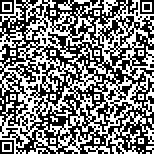下载中心
优秀审稿专家
优秀论文
相关链接
摘要

行星数据系统是归档和发布深空探测任务获得数据的在线平台,也是开展行星学科研究的基础。不同的深空探测任务,包括中国的“嫦娥计划”和“天问系列”,都存在数据格式转换复杂、数据处理不便、专业性强等缺点,使其难以面向公众。为了有效管理、存档和分析这些数据并发挥其应用潜力,本文基于WebGIS三层分布结构,采用面向对象的时空数据模型,设计并开发了山东大学威海行星数据系统(SDU-PDS)。该系统分为网页版和移动版两个版本。网页版是一个能有效存储、管理、分析和发布中国深空探测数据的在线系统;移动版则是一个集行星数据浏览、叠加和探测任务三维可视化于一体的行星可视化系统。SDU-PDS不仅能为科研工作人员提供数据服务和分析功能,还具有为大众普及行星科学知识和提高公众基本科学素养的科普功能。通过对SDU-PDS基本功能进行组合和优化,该系统实现了行星数据融合和挖掘等关键技术,开展了月球地质图绘制和“嫦娥四号”安全着陆区预选等科学任务和研究,从而服务于中国后续的深空探测任务。
The Planetary Data System (PDS) is an online platform where deep space mission data can be archived and released, and it is used as the basis for planetary research. Different deep space exploration missions, including Chinese “Chang ’E project” and the upcoming “Tianwen series,” have disadvantages such as complex data format conversion, inconvenient data processing, and strong professionalism; these issues hinder their application. A planetary data system (named SDU-PDS) is designed and developed in this study to manage and find the aforementioned data. Meanwhile, we attempt to design a data model to archive these planetary data in SDU-PDS.On the basis of the three-layer distribution structure of WebGIS and the object-oriented spatiotemporal data model, SDU-PDS is developed. Specifically, this system is divided into two versions: website or mobile devices. One is an online system, called “web version,” which is based on Web Graphics Library and developed by JavaScript. The other one, called mobile version, is developed on Android system through Unity3D platform. In addition, planetary data standard in this system uses Keyhole Markup Language, and the object-oriented spatiotemporal model is consistent with PDS4.Three layers of architecture, namely, data, intermediate application, and customer layers, are present in SDU-PDS. Different versions have different data transfer processes and functions in spite of same architecture. The web version can effectively store, publish, manage, and even analyze Chinese deep space exploration data. It provides a convenient data management and processing platform for researchers. The mobile version is for the general public and astrophile that integrates planetary data browsing, stacking, and 3D visualization.In this study, we made two further attempts in planetary data processing on the basis of functions on SDU-PDS website. The lunar geological map is the first attempt and is mapped out after some sophisticated steps. Various jobs, such as inversing planetary composition, devising geological unit, extracting structural objects, dating lunar basalt unit, stacking layers, and fusing information, are all indispensable. Consequently, exploring a large amount of information in this geological map, such as the lithofacies, lithology, geological structure and ages, and magmatic activity, is possible. Meanwhile, another attempt is to estimate the lunar surficial safety. We can understand the surficial relief on a smaller scale, such as meter scale, through remote sensing images. Then, factors such as terrain and distance are integrated to estimate the safety of the Chang ’E-4 landing zone and even design the rover’s path.Clearly, SDU-PDS not only can provide data services and analysis functions for scientific researchers but also can popularize knowledge of planetary science to the public to improve basic scientific literacy of citizens. By combining and optimizing the basic functions of SDU-PDS, we realize the mining and fusion of planetary data. In general, the system can meet the application requirements of Chinese deep space exploration missions to a certain extent by conducting scientific studies such as lunar geological mapping and pre-selection of “Chang ’E-4” safe landing areas. However, this planetary data system should be continuously developed and perfected, and the interactivity between two versions should be enhanced to explore the potential of planetary data further.

